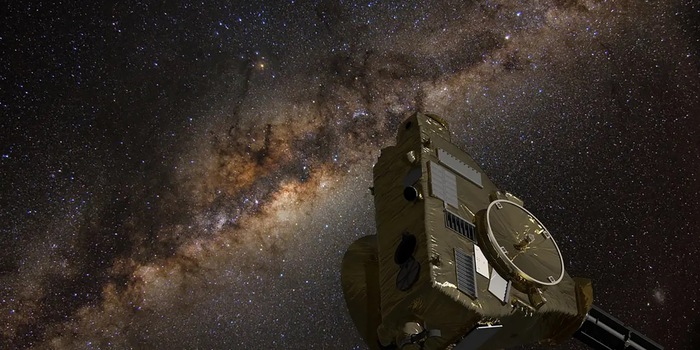
How dark is the universe?
This question is not as easy to answer as it might seem. At least visually, data from the New Horizons space probe has now provided clarity.
The entire universe is filled with background radiation, which can be observed at different wavelengths and comes from different sources. The best known is the microwave background (three-Kelvin radiation), a remnant from the early days of the universe. Less familiar are the backgrounds in the area of X-rays, radio waves or the visual. Around three years ago, a team led by Marc Postman from the Space Telescope Science Institute in Baltimore caused a stir with a paper in which images from the New Horizons space probe were analysed. The probe has now left the planets of the solar system far behind. The group recognised in them indications that the cosmic background radiation in the visual spectrum was stronger than expected. This means that visible space is brighter than could be explained by stars and galaxies alone. The team has now analysed further new images from New Horizons and significantly refined its corrections in the data processing for the scattered light in space and in the on-board camera. There is now much to suggest that the glow of the universe can be explained visually by the light of all stars and galaxies.
The New Horizons space probe, which is now 7.3 billion kilometres or 57 times Earth's distance from the sun (57 astronomical units or 57 AU), flew close to the dwarf planet Pluto in July 2015 and past a small member of the Kuiper Belt in January 2019. It carries the Long Range Reconnaissance Imager (LORRI), which is currently the farthest active camera from the sun. The cameras of the Voyager 1 and 2 space probes, which are much further away from us, were decommissioned more than 30 years ago as they consumed a lot of energy. At that time, the two probes had not yet travelled as far into space as New Horizons has now.
At a distance of 57 AU, New Horizons has clearly left the dust and other objects in the solar system such as planets and asteroids behind and therefore enjoys an unobstructed view of the cosmos. The dust clouds in the main plane of the solar system between the planets in particular make measurements with space telescopes such as Hubble or Webb, which are used to estimate the intensity of the radiation coming from distant space, more difficult.
LORRI does not have these problems, but special care is still required when analysing the data. For the current study, the camera was used to photograph more than 20 regions of the sky in which there are no bright foreground stars or luminous galaxies. The probe was orientated so that the camera was not exposed to reflections or scattered light from the sun. In addition, the evaluation procedures were improved with regard to scattered light originating from bright stars outside the image field. With the help of accurate maps from the European Planck Space Telescope, which had mapped the entire sky in the area of the cosmic three-Kelvin background radiation with high precision, the light scattered by dust particles from the Milky Way system into the image areas of New Horizons could also be calculated out.
It turned out that the light from stars and galaxies is sufficient in the optical range to explain the visual cosmic background radiation. It is not necessary to attribute the observed brightness to as yet unknown cosmic sources.
Spectrum of Science
We are a partner of Spektrum der Wissenschaft and want to make well-founded information more accessible to you. Follow Spektrum der Wissenschaft if you like the articles.
Original article on Spektrum.de
Experts from science and research report on the latest findings in their fields – competent, authentic and comprehensible.
From the latest iPhone to the return of 80s fashion. The editorial team will help you make sense of it all.
Show all